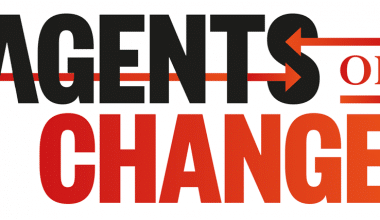Choosing the correct (BPA) business process automation software is critical for your company. Organizations are constantly looking for technology tools to assist them run their business operations efficiently in today’s digitalization race. In this guide, we ranked and reviewed the best business process automation software, along with some extra knowledge on the robotic process automation companies and some examples you may need.
What is Business Process Automation?
Business process automation (BPA) employs technology to automate a variety of back-office functions in order to optimize your business operations.
Instead of depending on individuals to complete mundane and simple jobs, your company now relies on technology to do so. Technology is more efficient and cost-effective, and it speeds up the process.
Businesses that adopt business process automation improve not only their digital operations but also their overall business process.
What is Robotic Process Automation (RPA)?
Robotic process automation (RPA) is a type of business process automation technology that automates repetitive menial work performed by humans by using software robots (bots) or artificial intelligence (AI).
Robotic process automation helps businesses to conduct high-volume procedures and quickly prioritize more complicated jobs, eliminating the need for human personnel.
This type of automation delivers a high ROI and accelerates any organization’s digital transformation initiatives.
Business Process Automation vs. Robotic Process Automation
According to the definitions above, both BPA and RPA have the same goal: to effectively execute business functions in a company.
BPA was the first to enter the technological industry, and it can also efficiently apply RPA within its system.
What is Business Process Automation Software?
Business Process Automation software performs procedures that achieve a certain business goal by utilizing business rules and automated tasks. Allowing an employee to request vacation time is a straightforward goal; building a new product is a more challenging one. All operations associated with these processes are monitored and analyzed for efficiency.
What is the significance of this? Simply said, because software cannot think for itself, humans make mistakes and are the primary drivers of innovation in every firm. This means that when your employees spend time on repetitive processes rather than thinking about ways to build your firm, you risk manual errors (which require additional effort to repair) for minimal reward. As a result, process automation decreases errors while liberating your employees’ time and energy.
How is Business Process Automation Software Used?
The type of business process you wish to automate will determine how you use BPA software. There is no one-size-fits-all miraculous software that can handle all of an organization’s business procedures.
Your social media automation software, for example, cannot be utilized to streamline other corporate procedures. You must conduct a study to find the best instrument for the job. Here are a few applications for BPA software.
Examples of Business Process Automation Processes That Can Be Automated
There are numerous examples, but here are a few:
#1. Operations management
Automate the entire logistical component of the process to keep track of who, what, and when in your business.
#2. Project management
Use project or task management software to avoid miscommunication of emails, information files, or to-do lists.
#3. Customer support
Use customer support software to automate some responses to save your support personnel the trouble of responding to hundreds or thousands of complaints about a problem.
#4. Social media management
To save time, use social media automation tools to schedule your posts throughout the day, week, or month of your choosing.
The advantage of adopting BPA software is that it expedites work. It improves the client experience while also providing insights into areas of your organization that require improvement.
Most importantly, it ensures a greater return on investment.
Does Your Business Need Business Process Automation Software?
There is a substantial association between firms who use BPA software and improved performance. If you want to maximize efficiency and performance, you must automate your company procedures.
Questions to Ask to Decide if Your Business Needs This Software
Here are some considerations to consider when deciding whether to adopt business process automation software.
#1. Do you struggle with too many meetings?
Most businesses deal with numerous back-to-back time-consuming meetings. Use BPA software to automate this procedure.
This program will significantly shorten the time it takes to solve problems, make faster choices, and streamline collaborations—all without requiring your staff to physically attend a meeting at some office.
#2. Does your business have too many manual processes?
Creating daily reports and manually compiling data is a time-consuming and labor-intensive activity that can also result in costly errors.
Replace manual reporting with business process automation software in your corporation.
#3. Is the document review process slowing down your business?
Delays can occur when your team waits for document approval or review from the manager or supervisor before beginning work.
What if the boss or supervisor is on leave or otherwise unavailable? This can throw your team off track and possibly harm morale.
#4. Do you think streamlined processes will improve employee performance?
Yes. The primary advantage of business process automation software is that it automates procedures more quickly, allowing staff to work more productively.
Teams don’t have to waste time waiting for approvals or reviews because they happen instantaneously.
Business Process Automation Software Use Examples
Here are some interesting BPA software use case examples to help you better understand business process automation software.
#1. Employee onboarding
Hiring personnel is a time-consuming and labor-intensive procedure. This is due to the amount of paperwork involved in the hiring process, which includes essential documentation, setting up bank accounts, organizing training sessions, setting up induction meetings, filling out employee information forms, and more.
This employment process becomes irregular, unstructured, and disconnected without the use of BPA software, and can even result in:
- Low productivity.
- Employee dissatisfaction.
- Missing out on some crucial tasks.
- Endless hiring paperwork.
The automated staff onboarding procedure guarantees a smooth transition from one task to the next.
#2. Purchase orders
Purchase orders are a recurring, day-to-day task in most firms that necessitates a significant amount of paperwork.
Employees complete a form and submit it to the purchasing staff. A purchase order is prepared and a copy is delivered to the supplier as well as the inventory team after it has been reviewed and authorized by the appropriate authority.
Several concerns could arise if this business process is not automated, including (but not limited to):
- Errors while taking delivery of the supplies.
- Errors in the purchase order.
- Incomplete records.
- Impacted productivity.
- Delayed purchase order approval.
Pros and Cons of BPA Software
Every piece of software has advantages and disadvantages. BPA software is no different.
Pros
- Improves efficiency
- Increases scalability
- increases adaptability
- Increases adaptability
Cons
- Employee eviction
- Investing in automation is costly.
- Machines’ limited capability
- Concerns about security
Best Business Process Automation Software
Many businesses acknowledge the need of automating business procedures. As a result, there has been an unexpected increase in demand for BPA software.
Examples of top business process automation tools include:
#1. Smartsheet
Smartsheet is a dynamic workspace that enables teams to manage projects, automate workflows, and rapidly build new solutions using no-code tools they enjoy, all while providing the protection IT requires.
This BPA software is an amazingly adaptable and simple-to-use solution that has improved organizational visibility, communication, and process improvement and has altered how firms function.
#2. Kissflow
Kissflow’s appeal is how quick and simple it is to utilize for anyone wishing to automate their company processes. This BPA software offers a straightforward, optimum, and efficient platform for managing and tracking all of your activities.
It frees you from repetitive rule-based business procedures and automates them with ease, precision, and comprehensive flexibility. Kissflow is the most straightforward business process automation software.
#3. Laserfiche
Laserfiche assists you in managing mission-critical processes in your firm by utilizing customizable, user-friendly reports to assess business process success. It is simple to learn but tough to master.
Using dashboards and visualizations, this BPA software assesses employee workloads. This is the process automation tool to use if you want to boost efficiency and accuracy.
#4. Comindware Tracker
Comindware is a business process software that increases team productivity while decreasing labor expenses through streamlined processes.
This BPA software makes it incredibly simple to replace several Excel files and complex processes with a single integrated solution that requires minimal IT personnel involvement.
#5. Hootsuite
Hootsuite is a well-known social media management automation platform on the market today. With over 150 apps in the Hootsuite App Discovery store, it has the most complete selection of social network connectors. It also includes an easy-to-use UI for speedy onboarding. You can rapidly link several accounts, including YouTube. Hootsuite is an excellent social media management solution for businesses that connect across multiple social networks.
#6. Basecamp
Basecamp is an online collaboration platform used by businesses. It is adaptable since it allows for a wide range of integrations. The primary features of Basecamp include deadline, file, task, announcement, and conversation tracking. Consider creating a virtual hub for company teams, which can be advantageous in a remote working environment. Basecamp is the most adaptable and strong workplace center.
#7. Asana
Asana is a project management platform with functionality for both managers and workers. Its straightforward user interface simplifies project management while encouraging usage and involvement. As far as security is concerned, Asana provides SSO, 2FA, and sophisticated granular permissions. Asana offers predefined templates, a shared team calendar, a task planner, task prioritizing, and repetitive job automation for management and planning.
#8. ConnectWise Manage
ConnectWise Manage business automation software gives you control over your business processes by proactively monitoring, managing, and supporting them. It is the most effective instrument for assisting your company in achieving its goals.
#9. Bonitasoft
Bonitasoft business process automation software aids in the transformation of your corporation. It automates corporate processes by involving individuals from multiple departments and then tracking their effectiveness over time.
#10. Wrike
Wrike is possibly the best business process automation application, with a plethora of capabilities that boost performance, accelerate growth, and enhance customer experience.
This BPA software is ideal for the way firms operate. It’s flexible enough for everyone on your team to see the broad picture and get things done.
#11. Quixy
Quixy is a no-code application development program as compared to other business process automation tools. It facilitates the development of custom apps to assist the company’s business processes.
For optimum value, our BPA software architecture automates, monitors, and improves business processes and workflows.
#12. Process Street
Process Street is a straightforward business process automation application. It’s also the most effective approach to keeping track of your team’s recurring checklists and procedures.
The click reduction and ease of use of this BPA program demonstrate how much attention went into its development. Process Street is the simplest method for your team to handle recurring workflows. It’s a simple yet effective checklist tool.
What Is a Process Automation Software?
The use of software and technologies to automate business processes and operations in order to achieve specific organizational goals, such as creating a product, hiring and onboarding an employee, or delivering customer service, is referred to as process automation.
Which RPA Tool Is Best?
UIPath is the greatest RPA solution because it provides a wide range of easy-to-use robot features, including artificial intelligence, and scales according to your business needs.
What Are the Types of Process Automation?
Among the several types of process automation are:
- Front-End Automation.
- Back-End Automation.
- Native Actions.
- Intelligent Automation.
What Are the Five Basic Process Types?
The majority of production environments fall into one of five broad groups. Repetitive, discrete, job shop, batch, and continuous processes.
What Is Basic Process Automation?
Basic automation automates simple and fundamental operations. Basic automation technologies digitize repetitive processes with little to no coding, reducing errors and speeding up transactional labor. This Basic automation includes business process management (BPM) and robotic process automation (RPA).
What Are the Three Ways to Automate a Process?
However, the term ‘automation’ is itself ambiguous, including a wide range of technologies with varying capabilities and use cases. Within this conglomeration of ideas, three major technologies must be considered: macros, IT process automation (ITPA), and Robotic Process Automation (RPA).
Does Process Automation Require Coding?
You will not need any programming expertise or abilities to accomplish basic automation procedures, even if they have never been done before. RPA solutions make it much easier to automate operations, making the process faster and more efficient.
In conclusion
Organizations can use a business process automation solution to eliminate human error while automating manual and repetitive operations. You can also get real-time data from a central console. This guide has everything you need to make the best decision.
Related Articles
- BUSINESS AUTOMATION: Definition, Examples, Software & Ideas
- BUSINESS PROCESS AUTOMATION: Definition and Top Software Tools
- 4 Companies To Watch In Warehouse Robotics
- Sales Automation: Meaning, Platforms & Benefits
- BEST AUTOMATION MARKETING SOFTWARE: Features and Pricing






